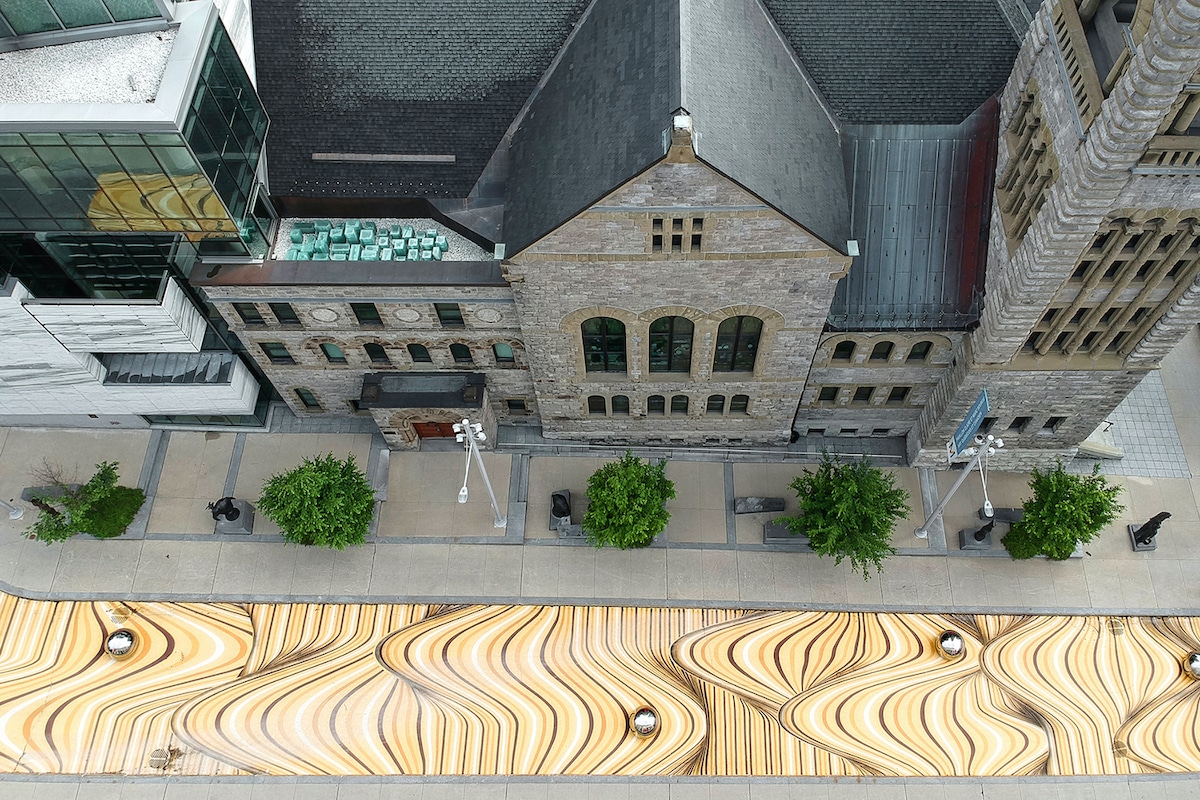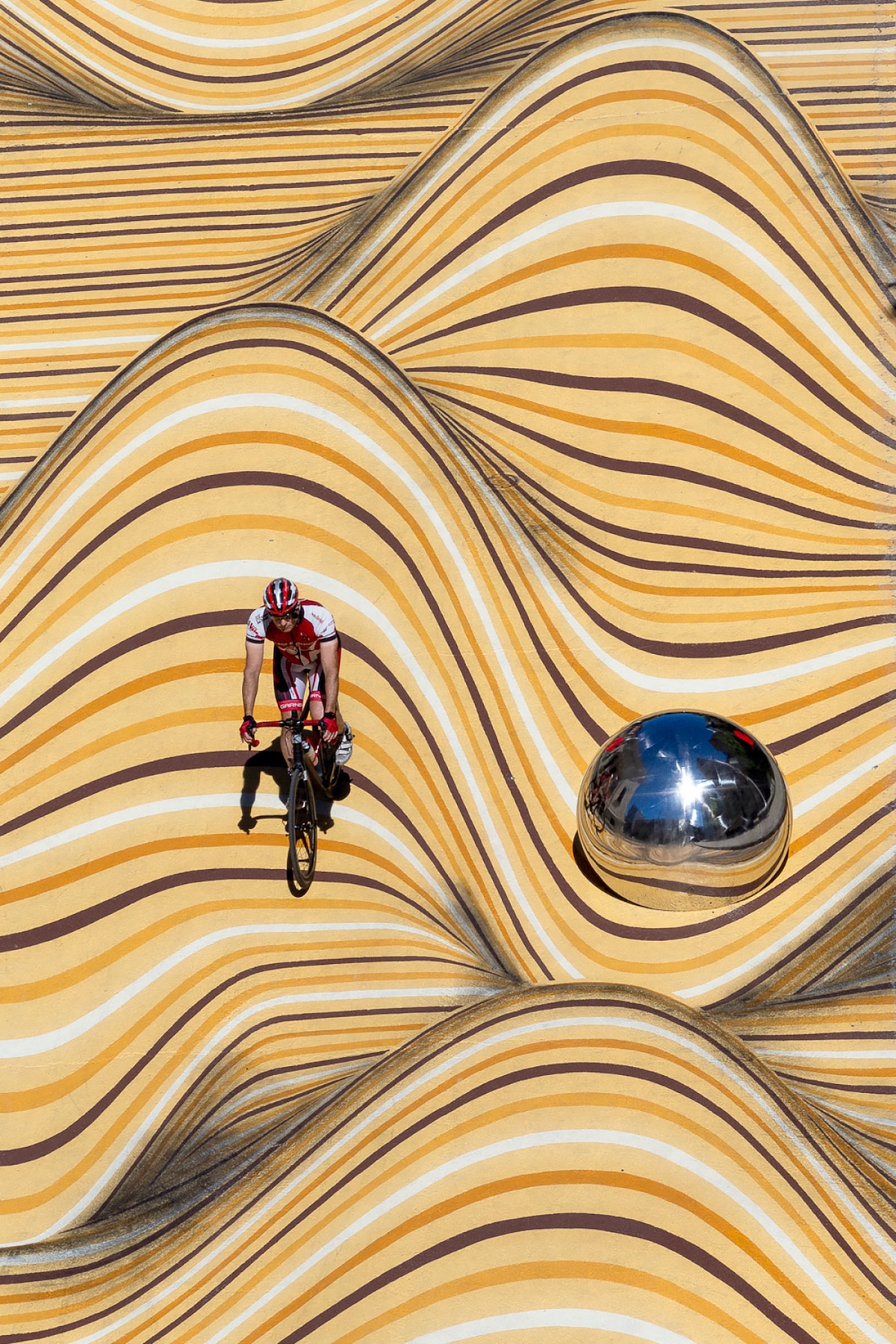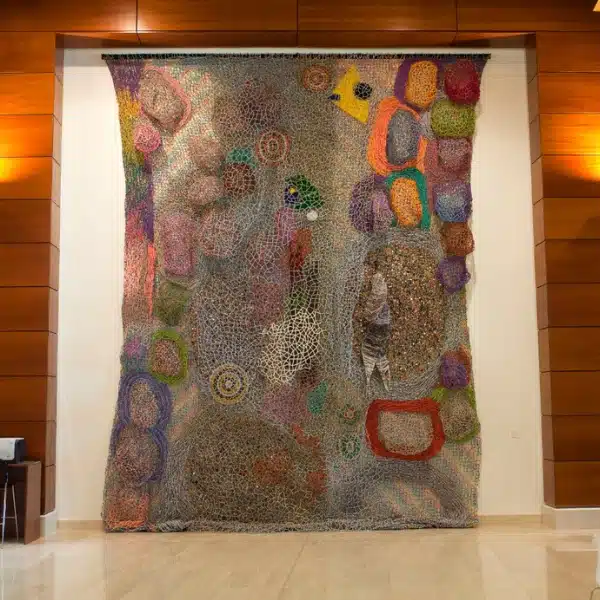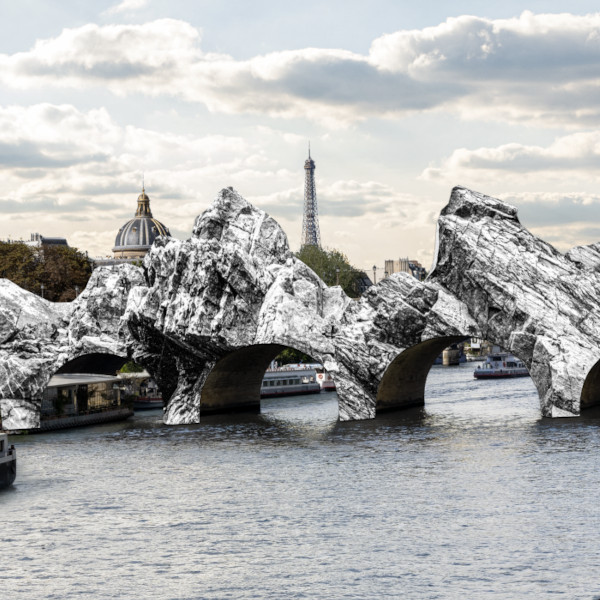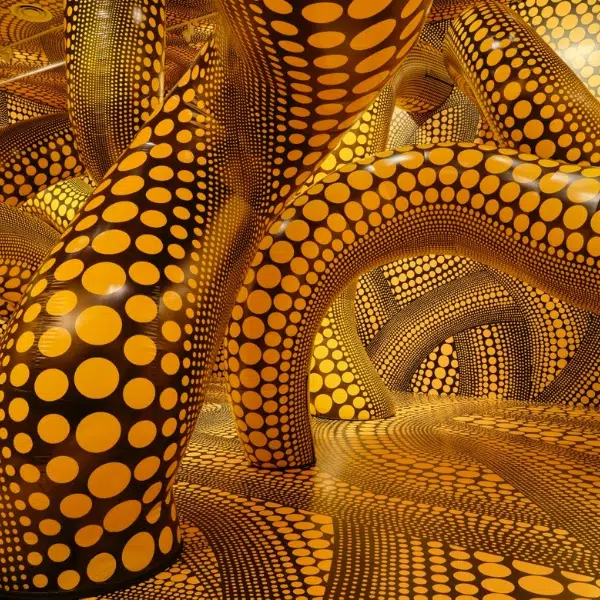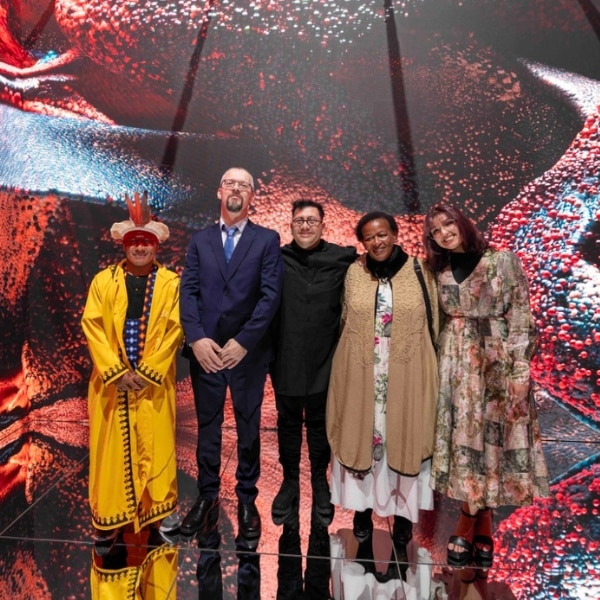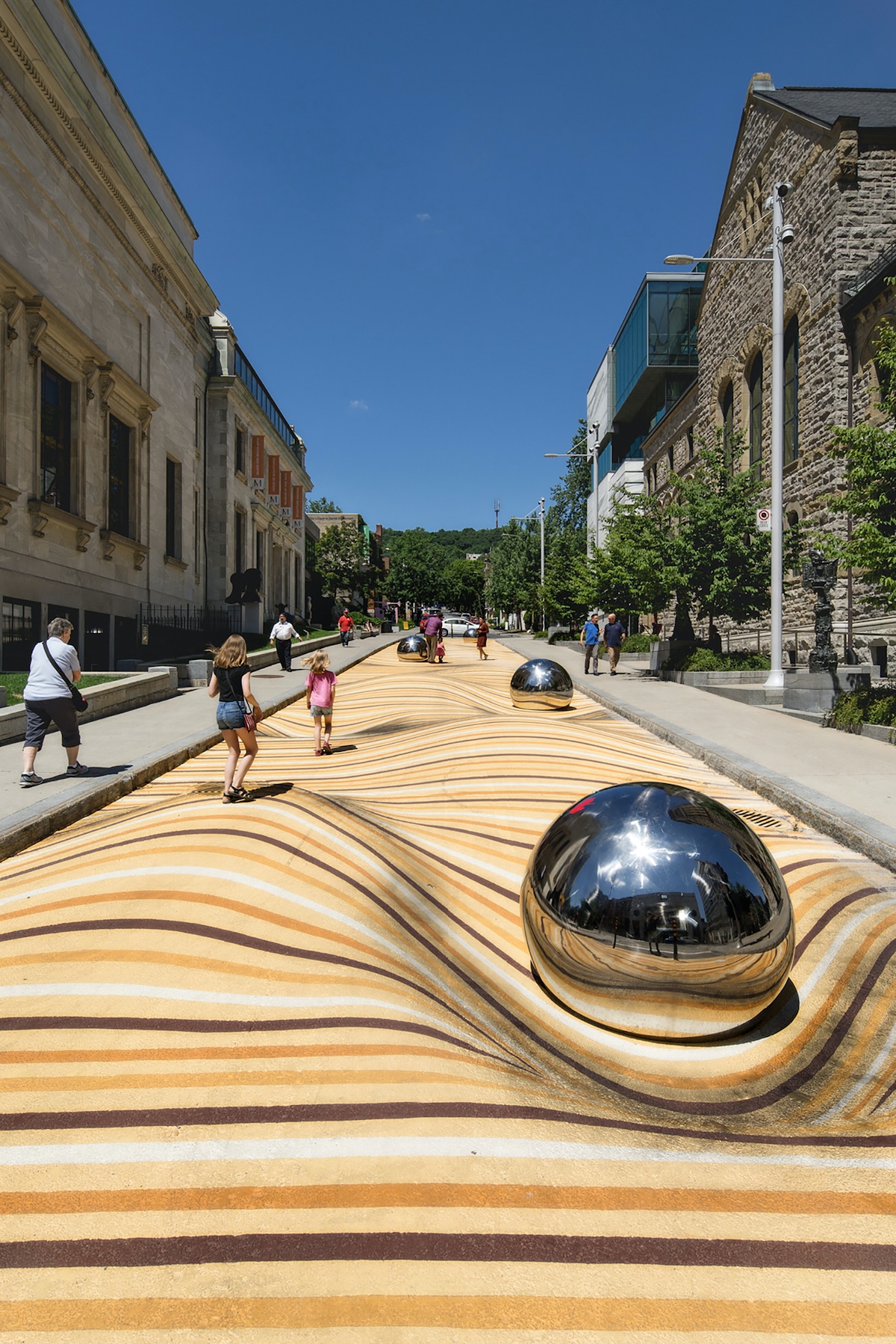
Outside the Montreal Museum of Fine Arts, the street undulates with rippling lines and geometric forms. Its surface is covered by an immersive mural appropriately named Moving Dunes. This morphing installation is the work of Montreal-based architecture firm NÓS, which was founded by Gil Hardy and Charles Laurence Proulx in 2016. The project—which was introduced alongside the 2018 MMFA exhibition From Africa to the Americas: Face-to-Face Picasso, Past and Present—was designed in response to the artistic approach used by cubist painters to challenge the role of perspective in visual representation.
“We feel that the installation is a kind of public/exterior extension of the exhibition,” Proulx tells My Modern Met, “so the visitor could immerse themselves in an abstract and playful environment, a giant ‘trompe l’oeil' in reference to cubist techniques.” The architecture firm achieved that aim through the use of an optical illusion process called anamorphosis, which requires the viewer to observe the mural from a particular vantage point in order to fully appreciate its form. Experiencing it from alternate viewpoints would break the illusion.
For that reason, the entire impact of the composition cannot be experienced fully through photographs (although they are quite remarkable as well). Instead, the observer must submerge themself within the moving landscape. It's a visual playground for children and adults alike, offering a new way to appreciate an otherwise ordinary street in the city. “We wanted to create an experiential mirage, a kind of oasis in the middle of downtown Montreal,” Proulx says. “The figure of the dunes also refers to a moving landscape, always changing. And it allows one to see the heritage building around in a new way and accentuate the effect of depth in the topography.”
Ultimately, Proulx and the NÓS team wants visitors to experience “an artwork that is not a fixed image but an environment to be discovered with the body moving through space.”
Canadian architecture firm NÓS installed their immersive mural Moving Dunes outside the Montreal Museum of Fine Arts.
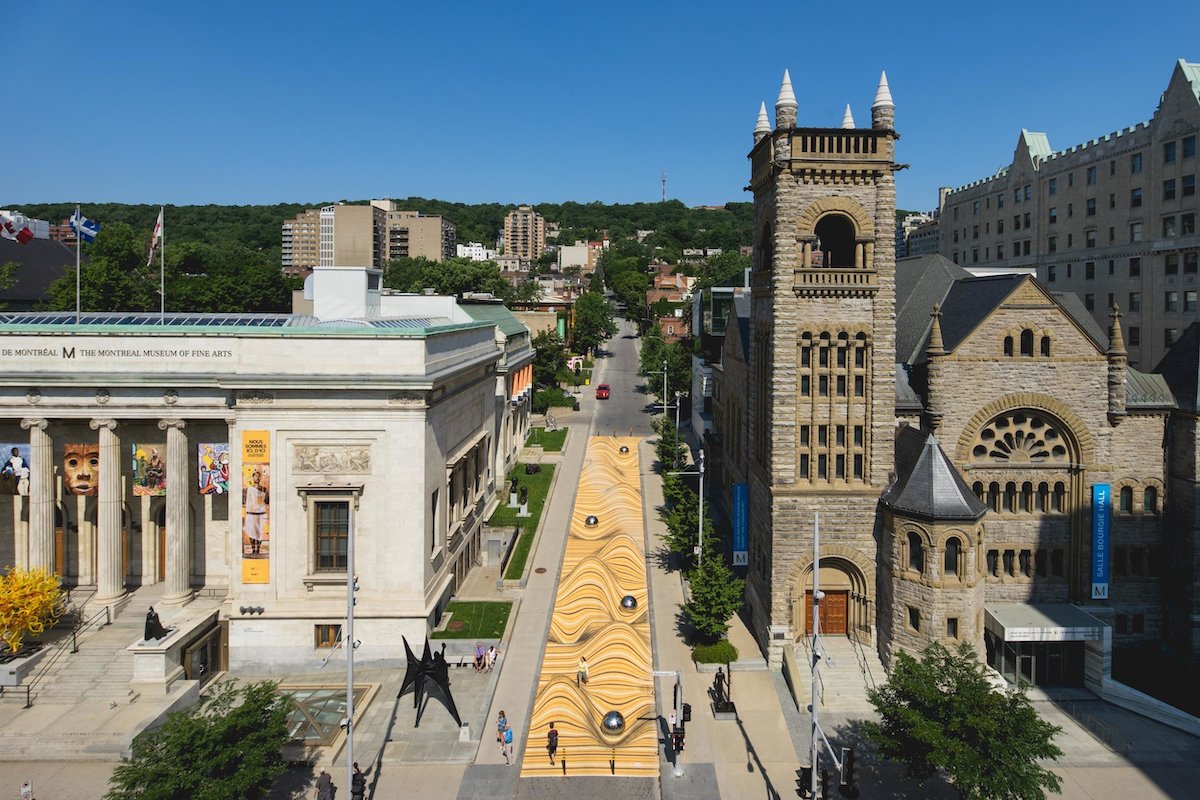
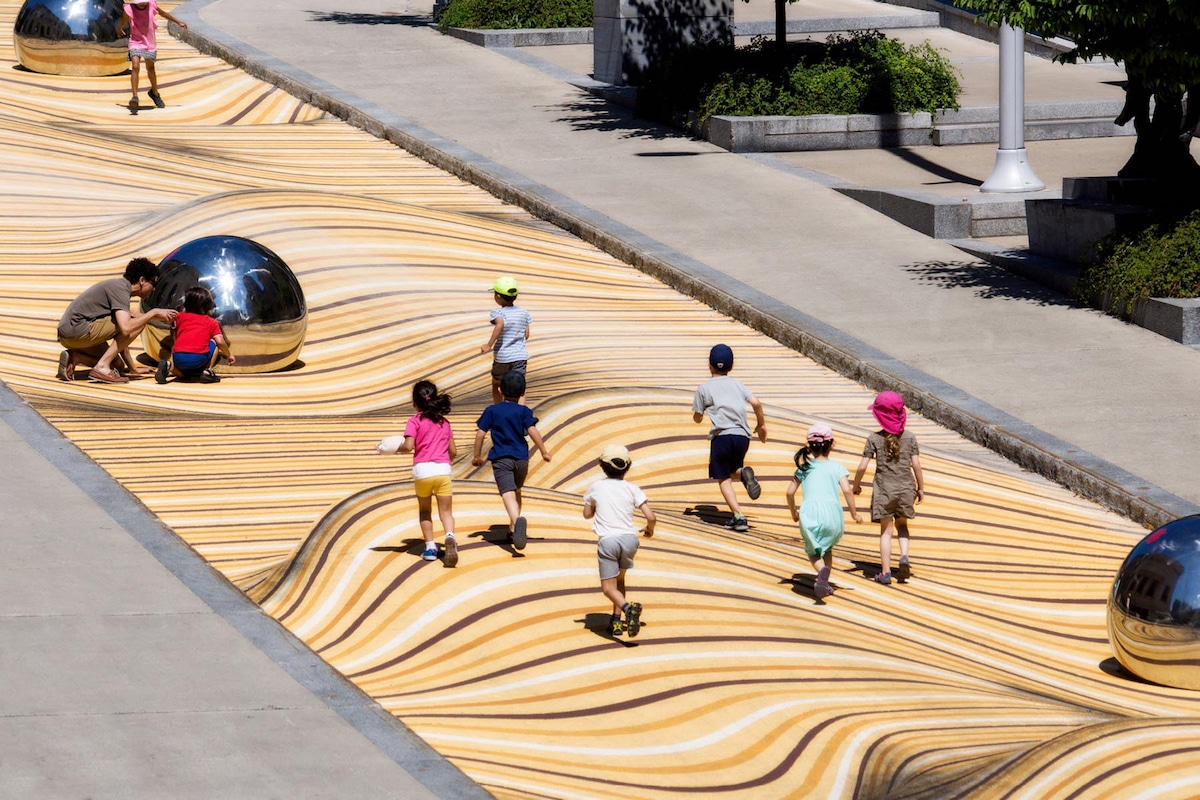
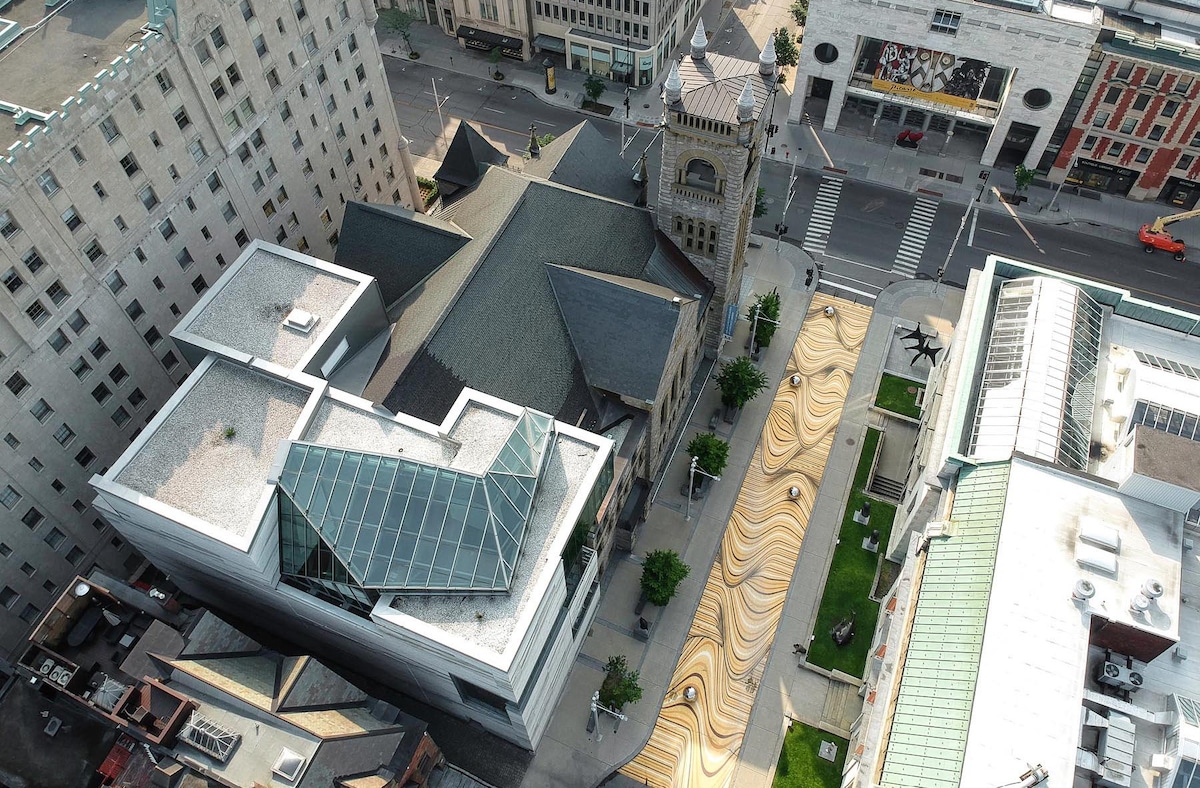
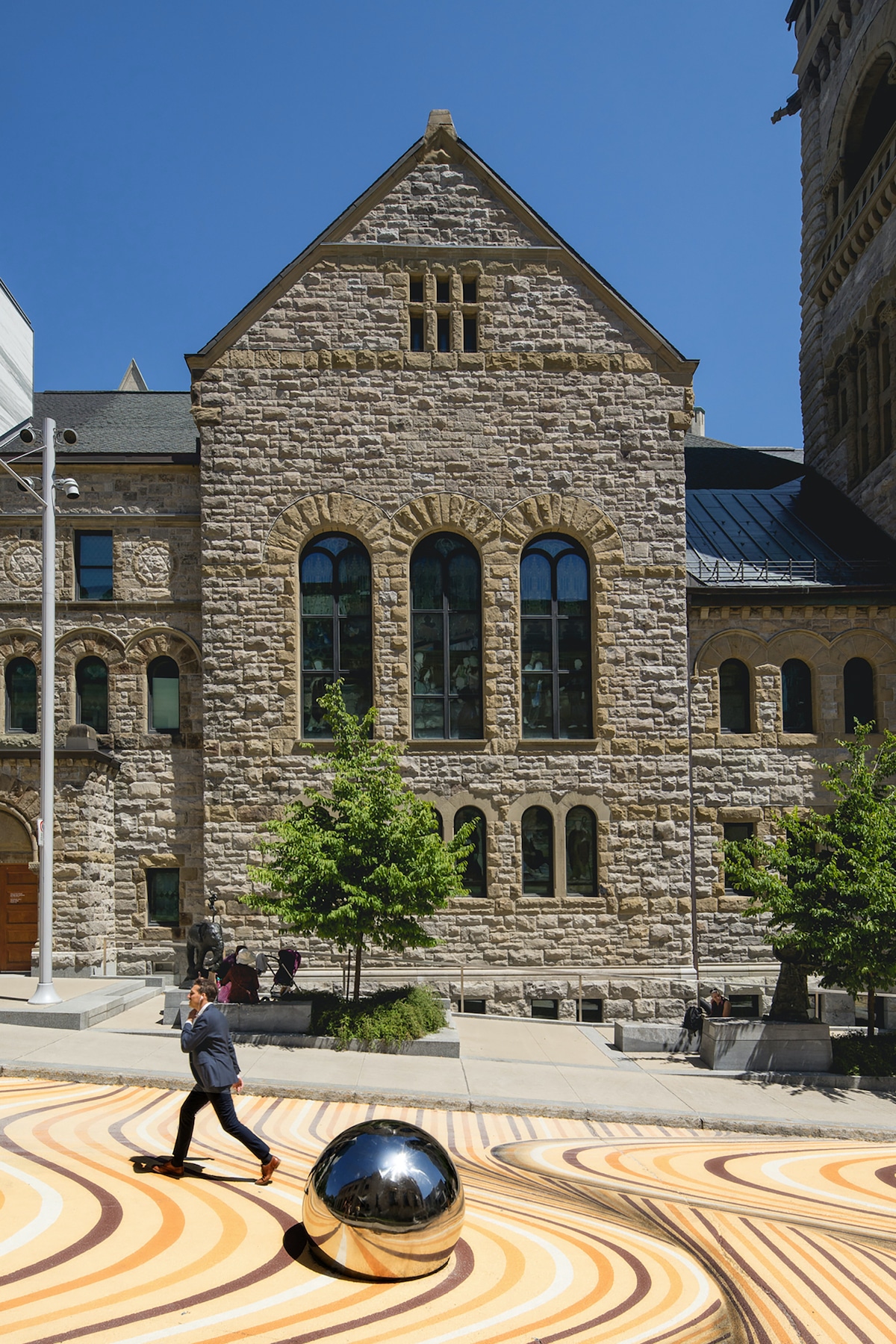
They used a technique called anamorphosis, which requires the observer to experience the mural from multiple points of view in order to fully appreciate it.
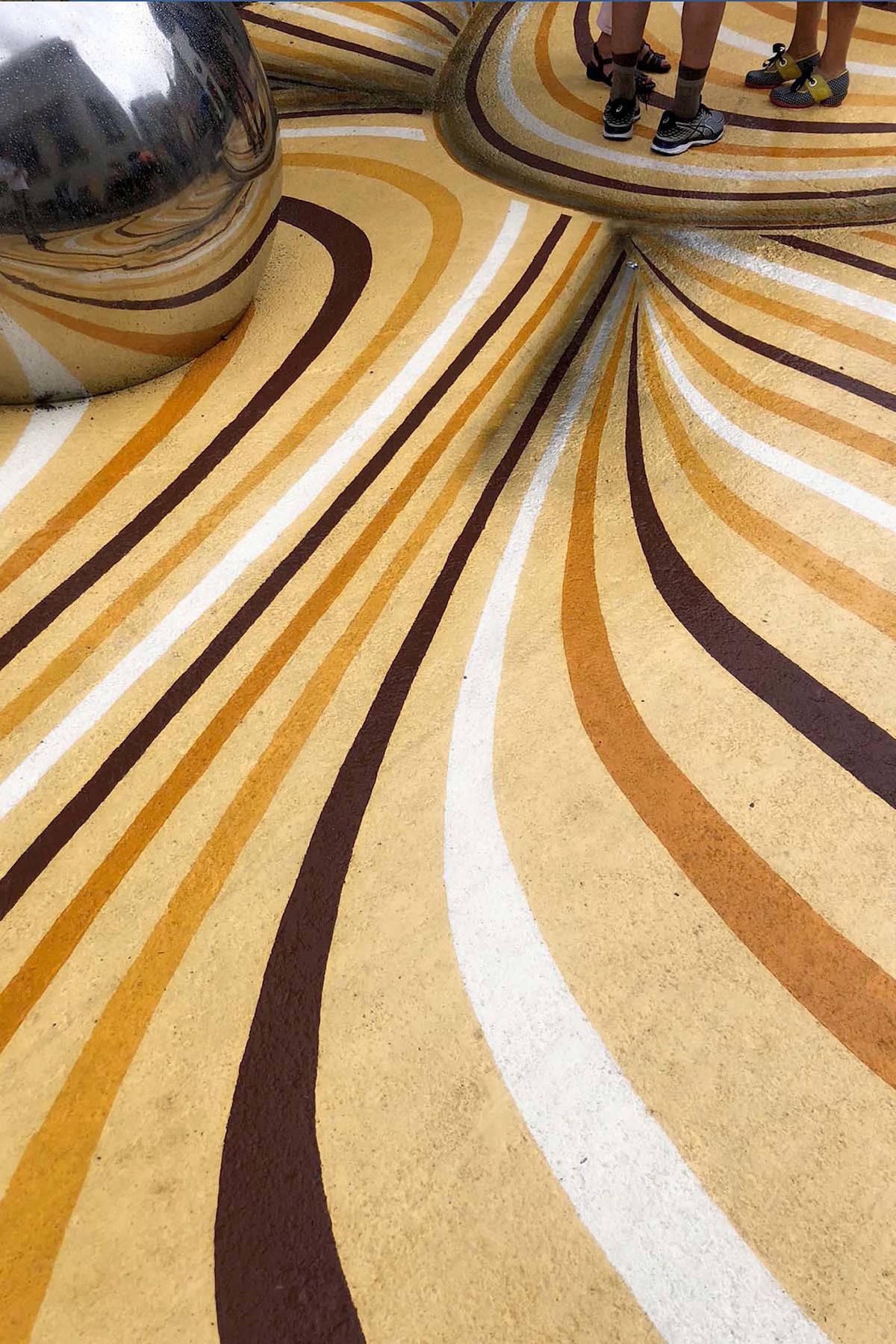
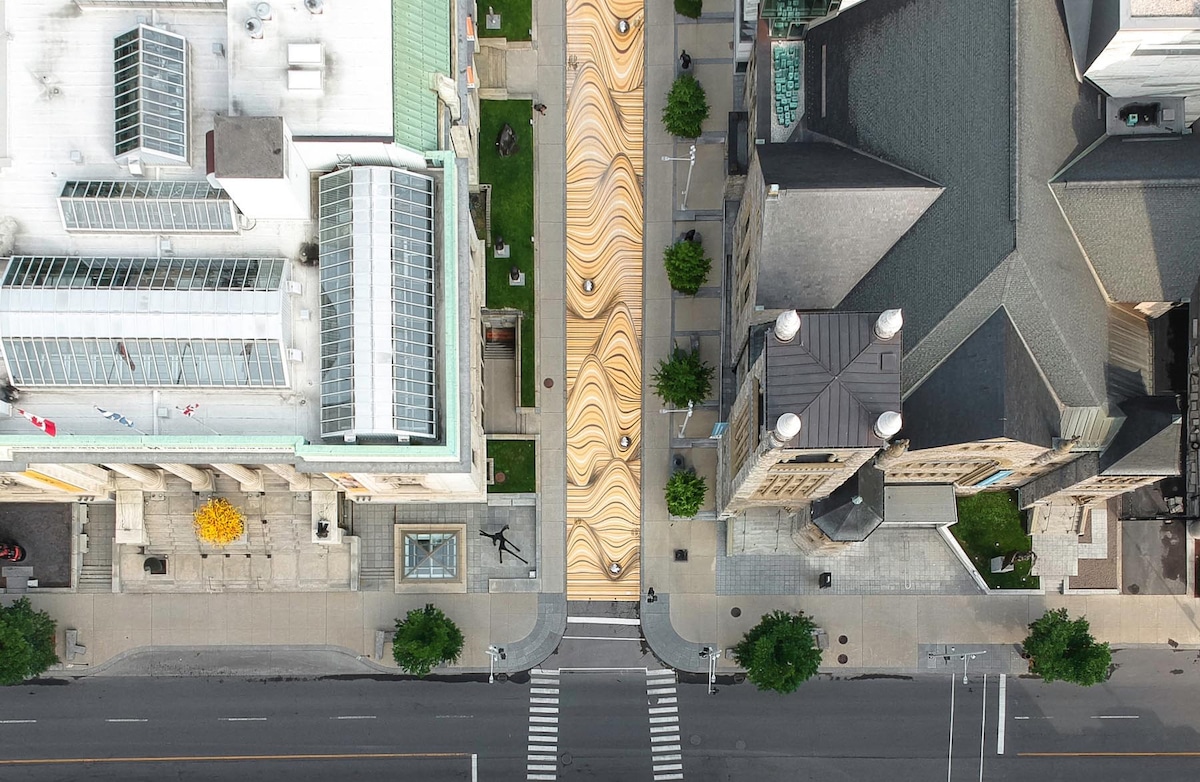
The anamorphic installation transforms as the viewer moves and interacts with it.

